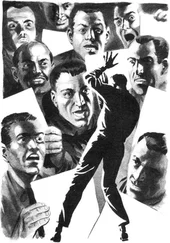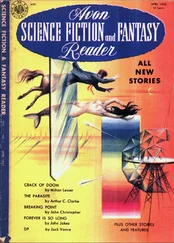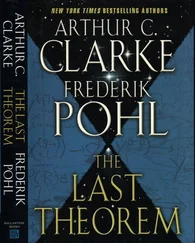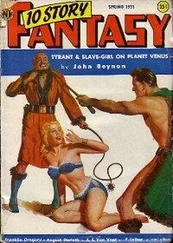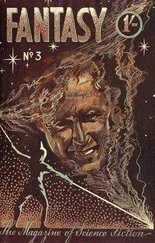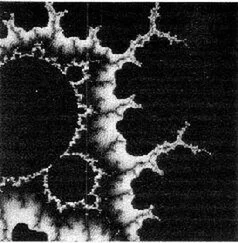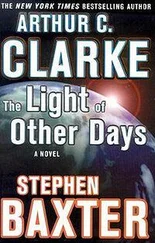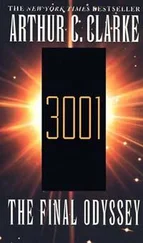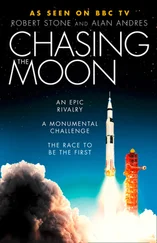Bowman looked at this device uneasily. It reminded him of the toy "ray guns" he had played with as a child-and in a super-civilization like this, a toy might be capable of almost anything….
He flinched as the trigger was pulled, for it suddenly occurred to him that he might be regarded as expendable as a rabbit, to a boy given his first air rifle. But all that happened was that a shining silver vortex ring emerged from the gun, shot swiftly toward the capsule, and bounced off it harmlessly, still expanding.
There was a considerable commotion in the playground. The two adults advanced rapidly on the young marksman, who was promptly deprived of his toy.
A little later he passed close to a shopping center-or so, for want of a better name, he supposed it to be. It was a huge, irregular structure with dozens of setback floors, and at least fifty of the luminous sky-tracks led into it at various levels. Along these tracks moved a steady flow of the transparent spheres and ovoids, carrying goods of various kinds. It was strange to see, hurrying through the air, perfectly recognizable articles of furniture like tables and chairs-followed by utterly weird pieces of machinery, or tanks of glowing colored gas.
And nothing seemed to go into the building; objects only came out of it. Nor were there any customers, though that was not so surprising; even on backward Earth, most shopping was now done by TV.
The cameos he glimpsed, in his swift passage through the City, confused as much as enlightened him. Many of the buildings had large transparent areas, and through these he caught brief, tantalizing views of their inhabitants. Once he saw a large group of them standing around a circular trough, full of redly fuming liquid, sipping it through their flexible trunks. That was understandable enough; but what was the heavy green mist that formed a complete blanket over the lower half of the room?
And there was one building inside which gravity seemed to have gone mad. He could see planes of glittering material, like faintly shining glass, intersecting at all angles. Figures were walking between or along these planes, with a total disregard for the conventions of "up" and "down." Some were moving straight upward, some at forty-five degrees to the horizontal; and often they would switch nonchalantly through a right angle as their private gravity field tilted and a wall became a floor. Even to an astronaut who had spent much of his career in weightless conditions, the sight was very disturbing.
There was one completely transparent dome beneath which some kind of demonstration, or game, or artistic performance was in progress. A small circular arena was surrounded by a rather thin crowd of a few hundred spectators, seated in swiveling chairs. What they were looking at was a dazzling-and, to Bowman, eye-wrenching –exhibition of shapes and colors, as if a mad geometrician was displaying his wares.
Apparently solid figures appeared, merged into each other, changed their perspective, receded to infinity while still remaining at the same spot. Sometimes there were maddening glimpses of what might almost have been another dimension, sometimes surfaces which seemed to be convex suddenly became concave. Once or twice the spectators became very agitated, waving their slender arms in excitement, for no reason that Bowman could see.
The character of the city was changing; the buildings were becoming smaller and more widely spaced. But ahead of him, still several miles away and partly shrouded in the eternal light haze, was one enormous structure, by far the largest he had seen. From a central dome and spire radiated four main wings separated by four smaller ones, so that the plan of the building roughly resembled a compass rose or a gigantic starfish. It was, Bowman estimated, at least a mile across at the base; and he was traveling straight toward it.
Then his eye was distracted by another strange sight. The capsule was moving over what appeared to be a broad sheet of shining metal-but no metal, unless it was molten, was corrugated with ripples that traveled back and forth across its surface. He seemed to be flying over a lake of mercury.
The ripples were produced by small, turtle-shaped machines that moved with slow deliberation over the shining surface, they left behind them broad, corrugated tracks that took several seconds to fade away. And then a huge bulge appeared in the center of the lake, as a thing like a submarine-or a whale?-emerged, and sank back again into the depths.
Beyond the lake was, at last, something wholly understandable. That great reddish-bronze torpedo could only be a spaceship, so, probably, were the shining crystal spheres and ovoids parked beside it. Small surface vehicles were scurrying to and fro, tiny figures were walking around, and there was even an observation tower surmounted by strange devices and bearing a flashing light. Everywhere and everywhen, Bowman decided, spaceports and airports look much the same, but the fact that these people operated their ships inside city limits showed how far their technology was ahead of Earth's.
Even while he was passing, one of the crystal spheres began to ascend, as effortlessly and as silently as a balloon. It rose straight upward, at a perfectly constant speed, until it was lost in the darkness of the sky. Bowman's thoughts traveled with it, and for a few moments he was almost overwhelmed by a devastating nostalgia for Earth.
It swiftly passed, for now he had something else to think about. That gigantic star-shaped building was looming up ahead.
Now the capsule was climbing again, and the central tower was looming above him, like a mountain piercing the clouds. And it was a very strange mountain, for it seemed made of glass or crystal, shot through with myriads of dark lines and threads, along many of which moved tiny nodes of light-some slowly, some at dazzling speed.
As a swallow may glide into its nest high up among the spires and buttresses of some great cathedral, so the capsule merged into the central tower. What from a distance had seemed merely a detail of the intricate ornamentation expanded until it was a circular tunnel, about ten feet in diameter. It was a fairly close fit, but the capsule raced along it with unchecked speed and for the first time Bowman noticed a blue line of light glimmering faintly in the air before him, presumably acting as his guide. The tunnel was driven through some translucent material, so that it seemed to Bowman that he was hurtling into the heart of an iceberg-if one could imagine an iceberg that coruscated not with blues and greens, but with pale reds and golds. He could glimpse other shapes moving around him in all directions, vertically and horizontally, apparently in adjoining tunnels, but it was impossible to see them clearly.
Then he burst out into a large cavity blown like a bubble in the ice. It was a roughly hemispherical chamber about a hundred yards across, with walls of constantly changing curvature, so that they were sometimes concave, sometimes convex. He was moving along a transparent plane about fifty feet above the floor, and there were other equally transparent planes above and below him.
Some were stationary, some mobile, carrying with them curious small structures and enigmatic pieces of machinery. The spectacle was confusing, yet orderly; and it was here, separated from him by the sliding crystal floors, that Bowman saw his first wholly non-humanoid intelligences.
Overhead, moving in a closely packed formation, were six squat cones, supported on dozens of tiny, tubelike legs. They looked rather like sea anemones walking on their tentacles, and Bowman could observe no signs of any sense organs. Around the middle of each cone was a white belt that seemed to be made of fur, and bore metal plates covered with angular hieroglyphics.
Читать дальше

